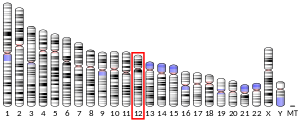
Interleukin-1 receptor–associated kinase 4 deficiency

2NRU, 2NRY, 2O8Y, 2OIB, 2OIC, 2OID, 3MOP, 4U97, 4U9A, 4XS2, 4Y73, 4YO6, 4YP8, 4ZTL, 4ZTM, 4ZTN, 4RMZ51135266632ENSG00000198001ENSMUSG00000059883Q9NWZ3Q69FE3Q8R4K2NM_001351338NM_001351339NM_001351340NM_001351341NM_001351342NM_001351343NM_001351344NM_001351345NM_029926NP_001338267NP_001338268NP_001338269NP_001338270NP_001338271NP_001338272NP_001338273NP_001338274NP_001107654.1NP_057207.2NP_084202IRAK-4 (interleukin-1 receptor-associated kinase 4), in the IRAK family, is a protein kinase involved in signaling innate immune responses from Toll-like receptors. It also supports signaling from T-cell receptors. IRAK4 contains domain structures which are similar to those of IRAK1, IRAK2, IRAKM and Pelle. IRAK4 is unique compared to IRAK1, IRAK2 and IRAKM in that it functions upstream of the other IRAKs, but is more similar to Pelle in this trait. IRAK4 is important for its clinical applications. IRAK-4 (interleukin-1 receptor-associated kinase 4), in the IRAK family, is a protein kinase involved in signaling innate immune responses from Toll-like receptors. It also supports signaling from T-cell receptors. IRAK4 contains domain structures which are similar to those of IRAK1, IRAK2, IRAKM and Pelle. IRAK4 is unique compared to IRAK1, IRAK2 and IRAKM in that it functions upstream of the other IRAKs, but is more similar to Pelle in this trait. IRAK4 is important for its clinical applications. Animals without IRAK-4 are more susceptible to viruses and bacteria but completely resistant to LPS challenge. The first IL-1 receptor-associated kinase (IRAK) was observed in 1994 through experiments with murine T helper cell lines D10N and EL-4. Two years later the first experimental member of this family of kinases, IRAK1, was cloned. In 2002, through database searches at the National Center for Biotechnology Information in an attempt to recognize novel members of the IRAK family, a human cDNA sequence which encoded a peptide sharing significant homology with IRAK1 was identified. This cDNA sequence was found to have five amino acid substitutions compared to IRAK1 and was termed IRAK4. IRAK4 was proposed to be the mammalian homolog of the Pelle gene found in Drosophila melanogaster and was proposed to require its kinase activity in order for it to function in activating NF-κB. It was also proposed by Li et al. that it might function upstream of other IRAKs and possibly cause a cascade of phosphorylation events through its function as an IRAK1 kinase. This idea of a cascade of phosphorylation events was supported by a study where an IRAK4 knockout in mice showed a more severe phenotype than other IRAK knockout experiments and signalling through Toll/IL-1 receptor (TIR) is virtually eliminated. In 2007 it was found that IRAK4 activity was necessary for activating signal pathways which lead to mitogen-activated protein kinases (MAPK), or Toll-like receptor-mediated immune responses (TLR), but was not essential to T-cell Receptor (TCR) signalling as was originally proposed. In recent years, the role of IRAK4 in regards to melanoma and other cancers has been investigated. IRAK4 was found to be in higher levels in some lines of melanoma. By reducing the IRAK4 activity it may be possible to identify new chemotherapeutic agents to treat patients with advanced melanoma for which there is presently no effective treatment or cure. IRAK4 is a threonine/serine protein kinase made up of 460 amino acids, which contains both a kinase domain and a death domain. Its kinase domain exhibits the typical bilobal structure of kinases, with the N terminal lobe consisting of a five-stranded antiparallel beta-sheet and one alpha helix. The C terminal lobe is composed mainly of a number of alpha helices. Also contained within IRAK4’s N-terminal is an extension of twenty amino acids, which is unique to IRAK4 among kinases, even within the IRAK family. Situated where the two lobes meet is an ATP binding site, which is covered by a tyrosine gatekeeper. Tyrosine as a gatekeeper is believed to be unique to the IRAK family of kinases. The protein also contains three auto-phosphorylation sites, each of which when mutated results in a decrease in the kinase activity of IRAK4. A structure of the autophosphorylation of the activation loop has been determined in which the activation loop Thr345 of one monomer is sitting in the active site of another monomer in the crystal (PDB: 4U9A, 4U97). Members of interleukin-1 receptor (Il-1R) and the Toll-like receptor superfamily share an intracytoplasmic Toll-IL-1 receptor (TLR) domain, which mediates recruitment of the interleukin-1 receptor-associated kinase (IRAK) complex via TIR-containing adapter molecules. The TIR-IRAK signaling pathway appears to be crucial for protective immunity against specific bacteria but is redundant against most other microorganisms. IRAK4 is considered the “master IRAK” in the mammalian IRAK family because it is the only component in the IL-1/TLR signalling pathway that is absolutely crucial to its functioning. When one of these pathways is stimulated, the cell is triggered to release proinflammatory signals and to trigger innate immune actions. The loss of IRAK4, or its intrinsic kinase activity, can entirely stop signalling through these pathways.
